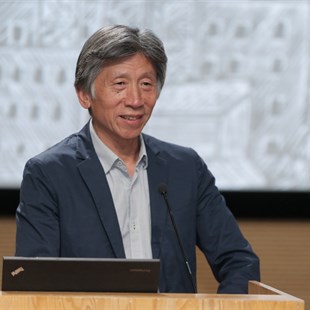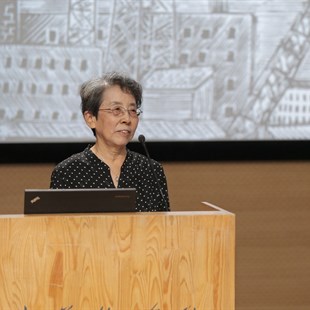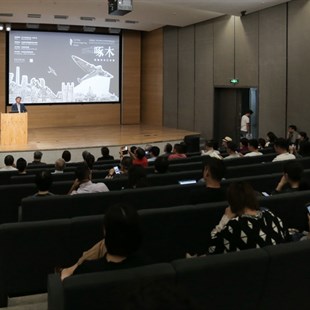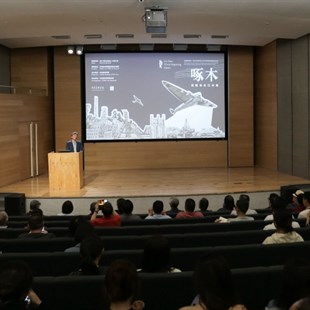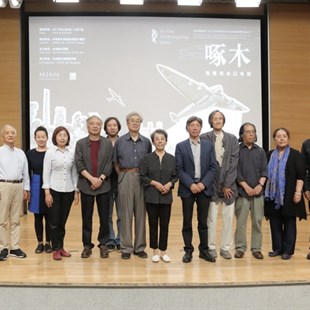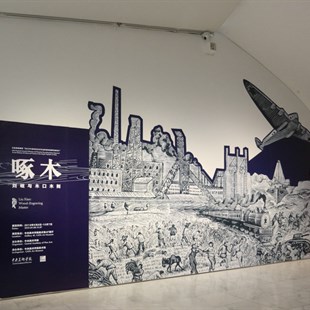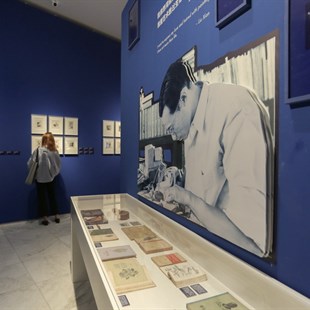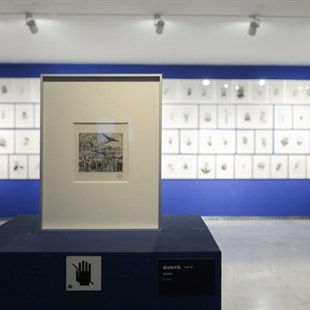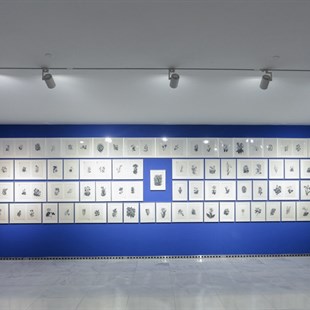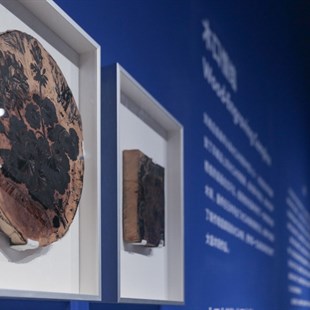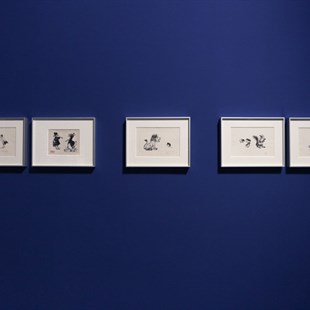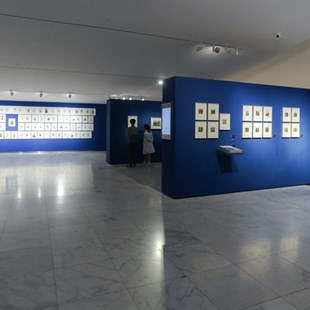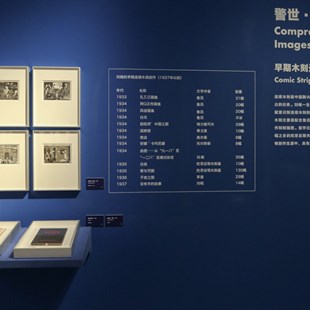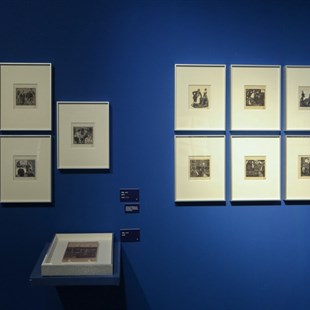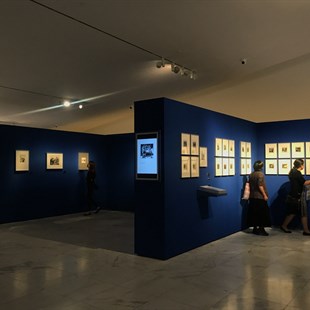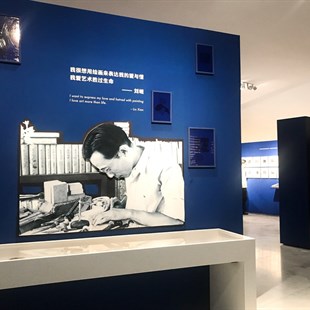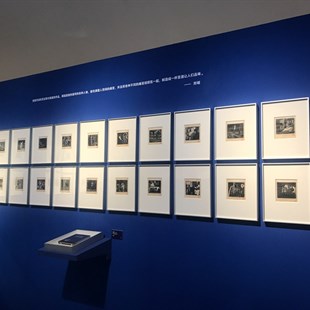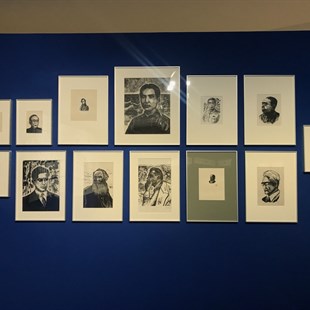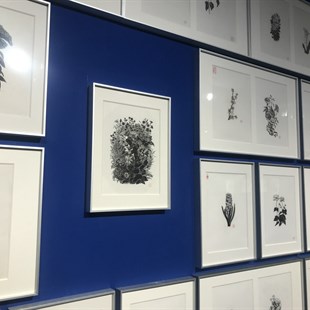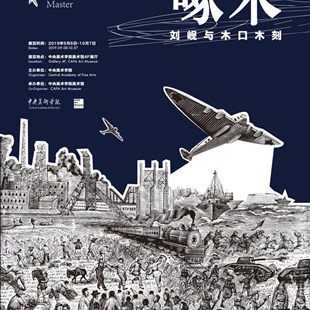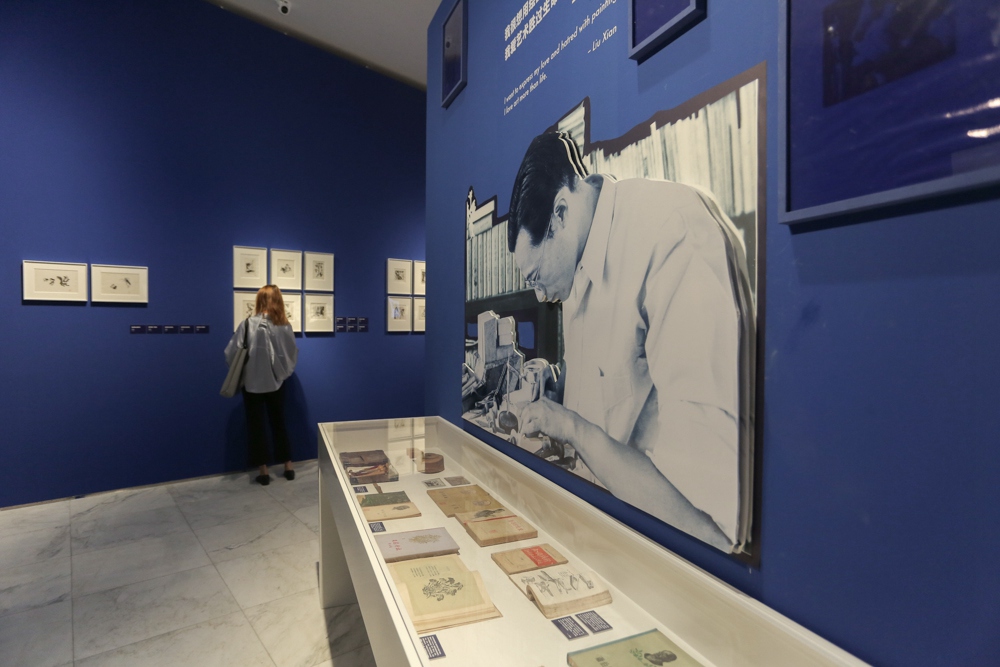
The exhibition is expanded from three sections, namely, “Wood-Engraving Complex”, “Comprehensive Images to Admonish” and “Nature & Fable”. The first section introduces the basic concept of Wood-Engraving and it retrospects Liu Xian’s artistic journey with a chronology visualized by both texts and illustrations.
The second part “Comprehensive Images to Admonish” features Liu Xian’s experience in terms of creating art during the War of Resistance against Japan. Works in this section embody Liu Xian’s creative reaction to reality during the war years. What is behind these artworks are Liu Xian’s patriotism and feelings of home and country. He depicted the realistic history in his wood-engravings through his artistic expressions.
It is notable that Liu Xian also created a number of portraits as wood engravings, especially men of literature both at home and abroad such as George Bernard Shaw, Shakespeare and Byron as well as Lu Xun, Mao Dun and Guo Moruo among others. In these works, Liu Xian shaped different figures based on their unique identities.
The third chapter “Nature & Fable” showcases Liu Xian’s wood engravings with various plants as the subject matter, which impresses spectators to a great extent. Different flowers are inscribed by Liu Xian to present an atmosphere of nature and vitality. During this period, he made effort in the work Hundred Flowers Blossom and also engaged in the work of newspaper illustration.
The ability of exploring art creation in line with the changing times is a spontaneous energy rooted in an artist’s soul. After the establishment of People’s Republic China, the theme of Liu Xian’s art shifted towards a praise of life and relaxing fables, which showcases the artist’s open-minded wisdom. Various animal tales and 100 fable pictures are involved.
The author Xiao Jun commented on Liu Xian’s artworks in 1981. He holds the view that Liu Xian’s artistic style inherits our national artistic features while absorbing woodcut techniques in western art. Liu Xian’s work features the unique artistic function of woodcut.
The exhibition remains on view till 7th October, 2019.
Preface of the Exhibition
Fan Di’an, President of CAFA
In the course of the development of Chinese art in the first half the 20th century, the emerging printmaking movement was a vigorous artistic force where cultural ideals were promoted, the idea of facing real life was encouraged, and great art works shone out. A large number of artists had gathered together, seeking the truth in thought, and bravely breaking the traditional rules in art. They had written a moving art chapter in the moving national liberation movement, showing the new quality and majestic power of culture. In this group, Mr. Liu Xian was an original participant and a consistent contributor. His contribution to the Chinese printmaking history has given him eternal brilliance.
Under the enlightenment of the May Fourth New Culture Thought and the cultural situation of salvation of the nation, Liu Xian had a strong passion since he was young. Lu Xun, the flag-bearer of the emerging printmaking movement, was not only Liu Xian’s spiritual mentor, but also a creative instructor who gave Liu Xian direct guidance. Liu Xian created illustrations for Lu Xun’s works. In Lu Xun’s wood-engraving works collection, Liu Xian’s art works accounted for the largest number. Owing to this relationship, Liu Xian’s art was based on reflecting social problems while insisting on the pursuit of the soul. It was like looking for the spiritual destination in the dark sky at night, using the thought of art and pen of effort to ignite the flame.
After the outbreak of the War of Resistance Against Japan, Liu Xian resolutely stopped studying in Japan, coming back to his motherland to participate in the anti-Japanese salvation campaign with his companions from the wood-engraving field. He then went to Yan’an to work as a wood-engraving teacher in the Department of Fine Arts in the Lu Xun Academy of Fine Arts, where he dedicated himself to art creation. Chairman Mao Zedong spoke highly of Liu Xian’s art works which recorded the anti-Japanese warfare and praised the work and life of people from a Democratic Base. He said: “I don’t know the disciplines of wood-engraving, but I like appreciating it. Comrade Liu Xian has been here for just a short period, but he has created many art works. I hope that he continues to work hard on the creation of new art for our country.” Inspired by Mao Zedong’s literary thoughts, Liu Xian and other artists in Yan’an worked together along the direction of New Art, playing an important role in attacking the enemy and inspiring the people by creating revolutionary artworks.
Born with talent and growing up with a deep understanding of art, Liu Xian tends to be detailed in his wood-engraving technique. Learning from western printmaking, he innovated a new format of wood-engraving (木口木刻). The artworks created with the new technique had a rigorous composition and exquisite shape with the burin and ink lines seamlessly integrated with the wood grain texture. His works are full of brightness and clarity, creating a comfortable and vast atmosphere filled in every detail of the painting, reaching a new height at the time by transforming Chinese printmaking into a casual creative style by absorbing a western art essence.
After the founding of the People’s Republic of China, Liu Xian paid attention to the change of the times and the new yearning for “beauty” in society, Liu Xian themed his artworks to create an expression of natural life and fable stories. The style became fresher and more comfortable. He expressed his praise of the new society and of the simple life in a large number of artworks and book illustrations, represented by his work series Hundred Flowers Blossom.
This year marks the 100th anniversary of the May Fourth Movement and the 70th anniversary of the founding of the People’s Republic of China. It is very realistic for understanding the artistic contribution of Mr. Liu Xian and the spirit of exploration of a generation of predecessors by holding the “Liu Xian: Wood-Engraving Master” exhibition. Looking closely at the traces of the burins and pens is like listening to the sound of wood pecking. Who can say that the tiny wood-engraving is not a miniature of the era and Mr Liu Xian’s art life?
Text by Zhang Yizhi
Translated and edited by Emily Weimeng Zhou
Photo courtesy of the organizer
About the exhibition:
Dates: 2019-09-08 – 2019-10-07
Location: CAFAM Gallery 4F
Opening: 2019-09-18 14:00
Organizer: CAFAM
Chief Planner: Fan Di’an
Art Director: Zhang Zikang
Curator: Li Yaochen


